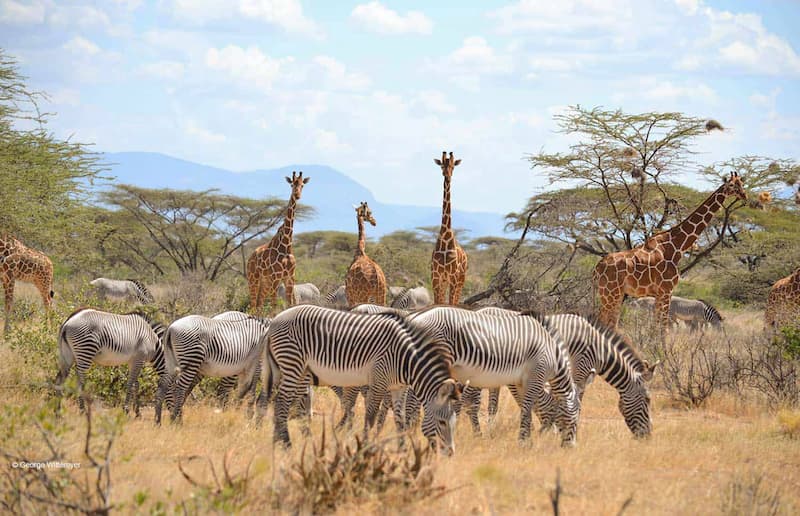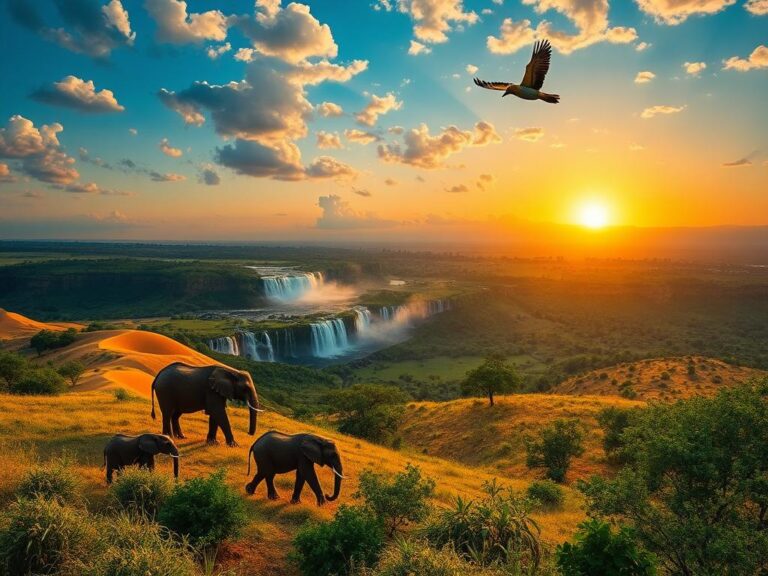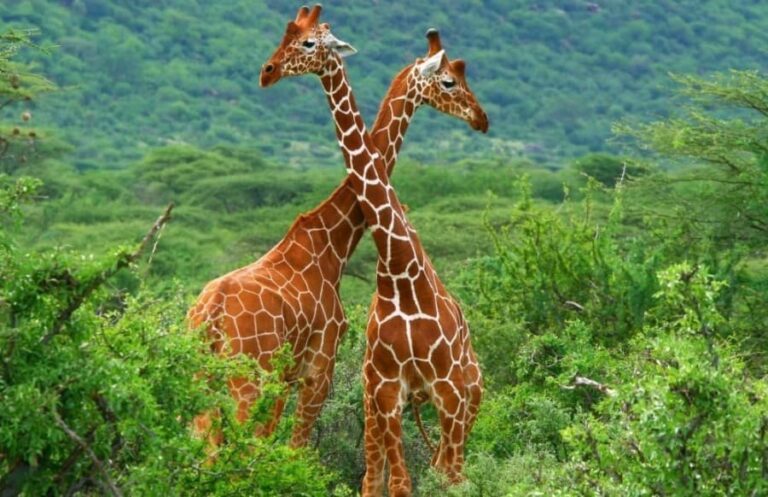
Best Time to See the Big 5 in Africa: A Comprehensive Exploration
Best time to see the Big 5 in Africa is a question that excites many adventure enthusiasts aiming to revel in the true beauty of wildlife.
Africa is home to a wealth of wildlife experiences, but the iconic Big 5—lions, leopards, elephants, buffalo, and rhinoceros—are the showstoppers.
In this article, we will dissect the best times to visit specific African destinations, ensuring you get the ultimate safari experience to see these magnificent creatures.
From calving seasons to the Great Migration, timing your visit intricately can elevate your safari from ordinary to extraordinary.
Let’s dive into the various months to discover when you should book your ticket for an unforgettable journey.
January: Start of the Green Season
January marks the onset of the rainy season, transforming savannahs into vibrant green landscapes.
This time of year is particularly special as many animals give birth, allowing you to witness the adorable sight of baby elephants and other wildlife.
Herbivores such as antelopes are also abundant, attracting predators like lions.
The lush scenery amidst the newborns creates satisfying photo opportunities.
Plus, since it’s the lower tourist season, the parks are less crowded, enhancing your overall experience.
February: Elephant Calves in Botswana
February is peak calving season for elephants, particularly in Botswana, renowned for its incredible wildlife.
Chobe National Park becomes a haven where you can observe mothers caring for their young in picturesque settings.
Driving through the park, you might find yourself surrounded by herds of elephants, making for an unforgettable sight.
Photographers relish this period as the golden light of February complements the vibrant landscape beautifully.
March: Great Migration Begins
March is an exciting month as the Great Migration starts to gain momentum in Tanzania.
While large herds may not be at their peak yet, it becomes an excellent period to spot leopards and lions as they look for prey.
The landscapes are also stunning, with wildflowers blooming in various regions.
This transition period offers a mix of animal activity, providing unique wildlife experiences.
As local expert Richard Bonham states, “There is something magical about witnessing the natural rhythms of African wildlife.”
April: Rainy Season Benefits
April witnesses short rains in Kenya, allowing for a quieter safari experience.
Fewer tourists mean you’ll have a more exclusive feel, and the lush surroundings bring wildlife into view more frequently.
The rains rejuvenate the landscape, prompting many animals to become more active.
Expect stunning photos of elephants drinking from puddles surrounded by vibrant flora.
May: Best for Birdwatching
As the rains begin to subside in May, migratory birds flock to the region, making it the ideal time for birdwatching enthusiasts.
While still focusing on the Big 5, you can relish the beauty of vibrant birds, adding to your overall safari experience.
The combined sights of the Big 5 and a kaleidoscope of birds create a unique safari atmosphere, catering to various interests.
Do not miss out on this vital period when the ecosystem is teeming with life!
June: Dry Season Begins
June marks the beginning of the dry season in many parks across Africa.
As the vegetation recedes, animals congregate around watering holes, offering incredible opportunities for sightings.
This is the ideal environment for spotting elephants, lions, and other wildlife as they seek out water.
Expect majestically framed encounters, from lions lounging in the sun to elephants playfully splashing in pools.
July: Peak Migration Season
July marks the height of the Great Migration; witnessing thousands of wildebeests and zebras in the Serengeti is nothing short of spectacular.
This period also creates perfect opportunities to observe predator-prey dynamics, where lions and leopards take advantage of the vulnerable herds.
The sights and sounds of the herds thunder across the plains, offering a safari experience that is hard to match.
Flat fields filled with wildlife provide unique adventures; every moment becomes a chance to witness the magic of nature.
August: Perfect for Rhino Spotting
August offers fantastic rhino-spotting opportunities, particularly in parks like Hluhluwe-iMfolozi in South Africa.
The dry conditions mean rhinos venture out into the open, greatly improving your chances of observing these rare animals.
Also, many parks tend to be quieter in August before the peak tourist season kicks in around September.
Hence, you might find that elusive encounter with a black rhino that becomes a highlight of your safari.
As author and conservationist, Tony Park says, “Every rhino sighting can remind us of the important work that needs to be done to protect this magnificent species.”
In August, those reminders are plentiful as you catch glimpses of these fragile giants in their natural habitats.
September: Fantastic Weather for Safaris
As September rolls in, the dry season reaches its peak, allowing for perfect wildlife sightings against crisp, clear skies.
Cooler temperatures and reduced humidity make for pleasant safari experiences.
Wildlife becomes more active as they search for food and hydration, and you’ll find your chances of witnessing the Big 5 increase.
September is arguably one of the best months to enjoy an iconic safari adventure, with a hearty mix of pleasant weather and abundant wildlife.
October: Fewer Tourists
October presents a unique opportunity as the peak tourist season begins to taper off.
You can experience parks with fewer visitors, allowing for more intimate encounters with the wildlife.
This tranquil experience enables a more thoughtful observation of animal behaviors without the distraction of crowds.
Moreover, the scenery remains awe-inspiring, providing a perfect backdrop for your safari adventure.
Additional Tips for Your Safari Experience
When planning your safari, it is essential to keep a few extra pointers in mind to enhance your experience:
– **Choose the Right Safari Lodge:** The lodge’s location can significantly impact your experience. Look for lodges near major water sources or key animal habitats.
– **Invest in Quality Gear:** Bring binoculars, a high-quality camera, and appropriate clothing for various weather conditions.
– **Respect Wildlife:** Maintain a safe distance from animals, never feed them, and follow your guide’s instructions.
– **Be Patient:** Wildlife encounters can be unpredictable. Sometimes the most rewarding experiences come after waiting with anticipation.
Engagement with animals should always prioritize their safety and peace.
Recap of the Best Time to See the Big 5
To summarize, the best time to see the Big 5 varies month by month:
– **January:** Green season and newborns.
– **February:** Elephant calf viewing in Botswana.
– **March:** Start of the Great Migration.
– **April:** Quieter safaris with lush landscapes.
– **May:** Best for birdwatching and diverse wildlife.
– **June:** Animals congregate around water sources.
– **July:** Peak migration season and predator sightings.
– **August:** Excellent for rhino-watching.
– **September:** Great weather for safaris.
– **October:** Fewer tourists and serene experiences.
Remember, no matter when you visit, Africa has unique wildlife experiences to offer every season.
Conclusion
Understanding the best time to see the Big 5 in Africa will greatly enhance your wildlife adventure.
By considering the various months and their offerings, you can plan a safari that captures the essence of these animals in their natural habitats.
Each season unfolds its charm, making your journey not just about the animals, but also about the stunning landscapes that come to life year-round.
So, pack your bags, choose your month wisely, and prepare to embrace the magic of Africa’s wildlife.
FAQs
1. What is the best month to visit for seeing the Big 5 in Africa?
The best months vary, but many experts recommend visiting between June and September for the dry season and optimal wildlife sightings.
2. Can I see the Big 5 in one safari trip?
Yes! While there’s no guarantee, most reputable safari guides will lead you to the best locations for spotting these majestic animals across various parks.
3. Are there specific parks known for the Big 5?
Several renowned parks include the Serengeti in Tanzania, Kruger National Park in South Africa, and Addo Elephant Park also in South Africa.
4. What should I wear on a safari?
Wear neutral-colored clothing to avoid startling animals.
Bring comfortable shoes, a hat, sunscreen, and a light jacket for cooler evenings.
5. Is it safe to go on a safari?
Yes, when guided by experienced professionals, safaris are safe.
Always heed the guidelines provided by your guides to ensure you enjoy a safe experience.
Let us know your experiences and thoughts in the comments below or any questions you may have about planning your safari!


